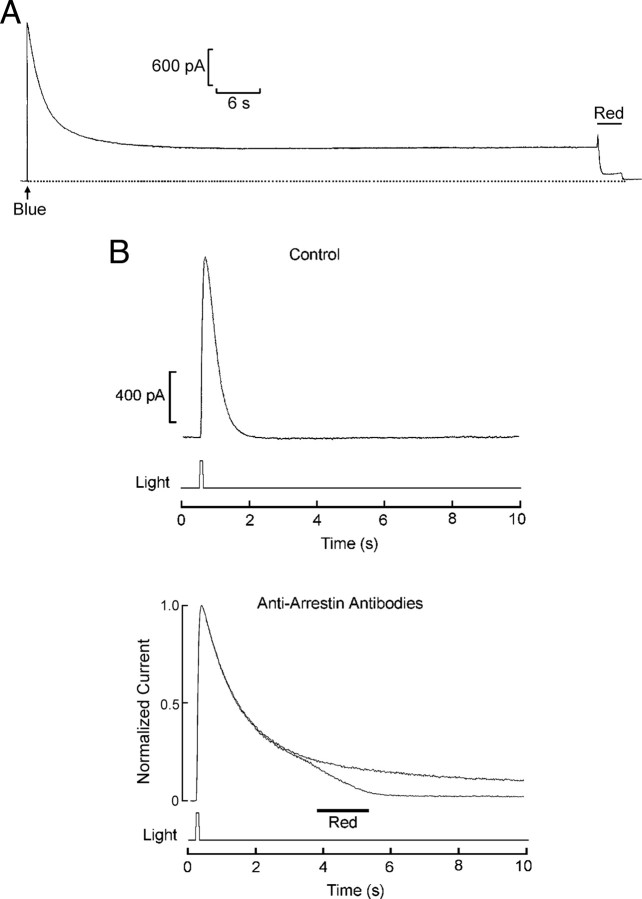Figure 5.
Prolonged aftercurrents reflect saturation of arrestin. A, Stimulation with an intense blue flash (1.32 × 1015 photons · cm−2 · s−1) evokes a persistent aftercurrent in a ciliary photoreceptor held under voltage clamp at −30 mV. After ∼1 min of sustained excitation, delivery of a long-wavelength light (red; 4.7 × 1016 photons · cm−2 · s−1) reset the photocurrent by photoconverting M→R. B, Top, Effect of light stimulation of subsaturating intensity in a control cell, using a wavelength near the isosbestic R/M wavelength (λ = 540 nm), intended to avoid the generation of a large pool of metarhodopsin. The photocurrent decayed to baseline in <1.5 s; holding potential −30 mV. Bottom, A similar stimulus was applied to another cell extensively dialyzed with anti-arrestin Abs; in this case, the decay phase of the response was dramatically retarded, but the subsequent delivery of a red light caused the complete shutoff of the lingering photocurrent, indicating that it stemmed from persistent activation of photopigment that could not be quenched by the available arrestin. By contrast, omission of the red light caused the tail to linger for a prolonged period of time.

